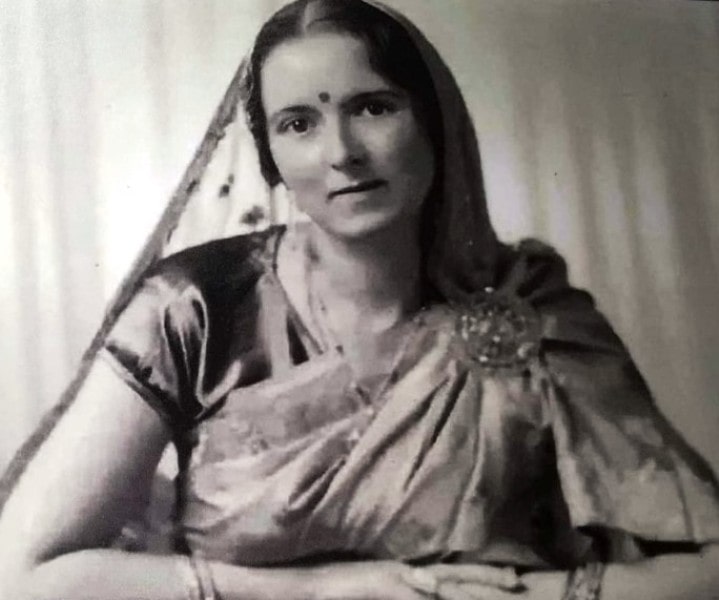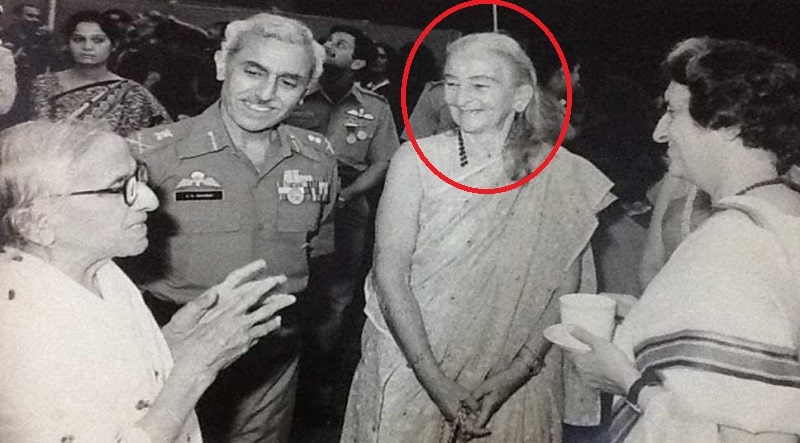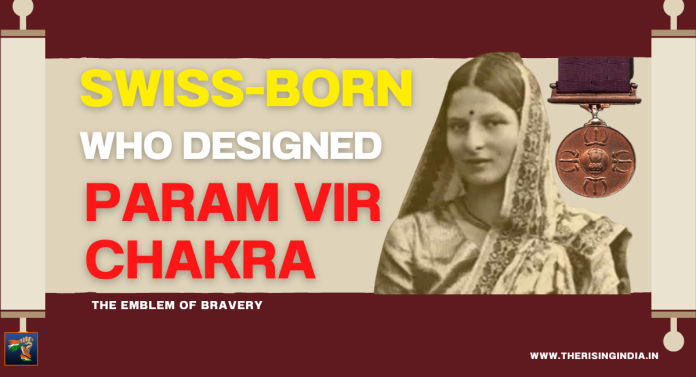Today we will learn about ‘The Swiss-Born Woman Who Designed India’s Param Vir Chakra’. The Param Vir Chakra, India’s highest military decoration for acts of extraordinary bravery and valor in the face of the enemy, stands as a symbol of the indomitable spirit of the Indian Armed Forces. Behind this prestigious award lies an exceptional woman, Savitri Khanolkar, whose creative genius brought the embodiment of bravery and sacrifice to life.
In this article, we delve into the life history of Savitri Khanolkar, her journey as the mastermind behind the Param Vir Chakra’s design, and the enduring legacy of her contribution to the nation.
Savitri Khanolkar: Who Designed India’s Param Vir Chakra
Savitri Khanolkar was born Eve Yvonne Maday de Maros in Neuchâtel, Switzerland, in 1913 to a Swiss father and an Indian mother. Her father, Alfred Maday, was a businessman, and her mother, Laxmibai Maday, was a homemaker. Khanolkar had two younger siblings, a brother and a sister.

Khanolkar’s family moved to India when she was six years old. They settled in Mumbai, where Khanolkar attended school and began to develop her interest in art. She was a gifted student, and she excelled in both her academic and artistic studies. Her artistic talent and passion for design flourished from a young age, and she dedicated herself to honing her craft. Beyond her artistic pursuits, Savitri’s deep love for her country and the desire to contribute to its welfare drove her to make a meaningful impact through her creativity.
Education and Career
After graduating from high school, Khanolkar enrolled in the Sir J. J. School of Art in Mumbai. She studied art there for four years, and she graduated with a degree in fine arts in 1935.
After graduating from art school, Khanolkar worked as a commercial artist and illustrator. She also began to exhibit her paintings in solo and group exhibitions. Her work was well-received by critics, and she quickly established herself as a talented
Fell In Love and Became a Hindu
Savitri Khanolkar was born Eve Yvonne Maday de Maros in Neuchâtel, Switzerland, in 1913. Her father was a Swiss professor of sociology and her mother was an Indian. She met her future husband, Vikram Ramji Khanolkar, when he was a young Indian Army cadet undergoing training at the Royal Military Academy, Sandhurst in the United Kingdom. He was visiting Switzerland during a term break and they fell in love.

Her father did not agree to let her go away to a faraway country like India but Eve was a determined young woman, and her love was strong. She followed Vikram to India a few years later, and in 1932, she married him in Lucknow. She subsequently changed her name to Savitri Bai Khanolkar, became a Hindu and acquired Indian citizenship.
Vikram Ramji Khanolkar was an Indian Army officer who rose to the rank of Major General. He was a recipient of the Padma Bhushan, India’s third-highest civilian award.
The Birth of a Symbol: Param Vir Chakra
The genesis of the Param Vir Chakra dates back to the early years after India’s independence in 1947. The Indian government sought to establish a prestigious military decoration that would honor the unparalleled bravery and self-sacrifice demonstrated by members of the armed forces in the line of duty.

In response to this noble cause, Savitri Khanolkar’s artistic talents took center stage. With an astute understanding of the significance of the award and an eye for detail, she embarked on crafting a design that would encapsulate the very essence of bravery and valor. Her vision for the Param Vir Chakra transcended mere aesthetics; it was a profound symbol of the nation’s gratitude and recognition of the soldiers’ extraordinary sacrifices.
Param Vir CHakra: The Emblem of Bravery
Savitri Khanolkar’s design for the Param Vir Chakra was inspired by both the ancient Indian mythology and the contemporary symbolism of the nation. The medal took the form of a circular bronze disc, representing the eternal nature of courage and valor. At its heart, it proudly displayed the emblem of India, symbolizing the unity of the nation in the face of adversity.

Surrounding the emblem, four replicas of the Vajra, the mythical weapon of Lord Indra, were intricately crafted. This symbolism conveyed the unyielding and thunderous strength that resided within each recipient of the Param Vir Chakra. It served as a reminder that these brave souls possessed the power to strike fear into the hearts of the enemy and defend the nation with unwavering determination.
On the reverse side of the medal, the words “Param Vir Chakra” were inscribed in both Hindi and English. This side served as a poignant reminder of the supreme sacrifice made by those who had received the award, inspiring generations to come.
The Unveiling and Legacy:
Savitri Khanolkar’s design for the Param Vir Chakra received unanimous acclaim from the Indian government and the armed forces. On January 26, 1950, during the Republic Day parade, the Param Vir Chakra was unveiled to the nation, marking a historic moment in India’s journey. From that day forward, this award became an emblem of courage and heroism, evoking immense pride in every Indian heart.
Beyond her role in designing the Param Vir Chakra, Savitri Khanolkar also contributed her artistic brilliance to various other medals and awards for the Indian Armed Forces, each symbolizing different acts of bravery and exceptional service.
Tthe first Param Vir Chakra was awarded to Savitribai’s elder daughter Kumudini Sharma’s brother-in-law Major Somnath Sharma of 4 Kumaon regiment, who was posthumously awarded for his valour during the 1947-48 Indo-Pak war in Kashmir.
Additional Details:
In addition to designing the Param Vir Chakra, Khanolkar also designed other medals for the Indian military, including the Mahavir Chakra, the Vir Chakra, the Ashok Chakra, the Kirti Chakra, and the Shaurya Chakra. She was also a prolific painter and illustrator, and her work has been exhibited in galleries and museums around the world.
The couple had two daughters, Kumudini and Suman. Savitri Khanolkar was a talented artist and a dedicated patriot. She was a member of the Bombay Art Society and the Lalit Kala Akademi, and was awarded the Padma Bhushan, India’s third-highest civilian award, in 1973. Savitri Khanolkar died in 1990, at the age of 77. She is remembered as a talented artist and a dedicated patriot who made a significant contribution to India’s military history.
Conclusion:
Savitri Khanolkar, a woman of extraordinary talent and unwavering patriotism, left an indelible mark on the history of the Indian Armed Forces through her design of the Param Vir Chakra. Her creative brilliance breathed life into an award that stands as a testament to the bravery and valor of India’s soldiers.
As we honor the recipients of the Param Vir Chakra, let us also pay tribute to Savitri Khanolkar for her invaluable contribution to the nation. Her legacy continues to inspire generations of Indians to embrace courage, dedication, and selflessness in service to the motherland.
The Param Vir Chakra stands as a constant reminder that true heroes are not only born on the battlefield but also in the hearts of those who envision and create lasting symbols of valor and sacrifice.
Hope you liked the information. Stay tuned and follow The Rising India on Facebook, Twitter for more interesting information!









